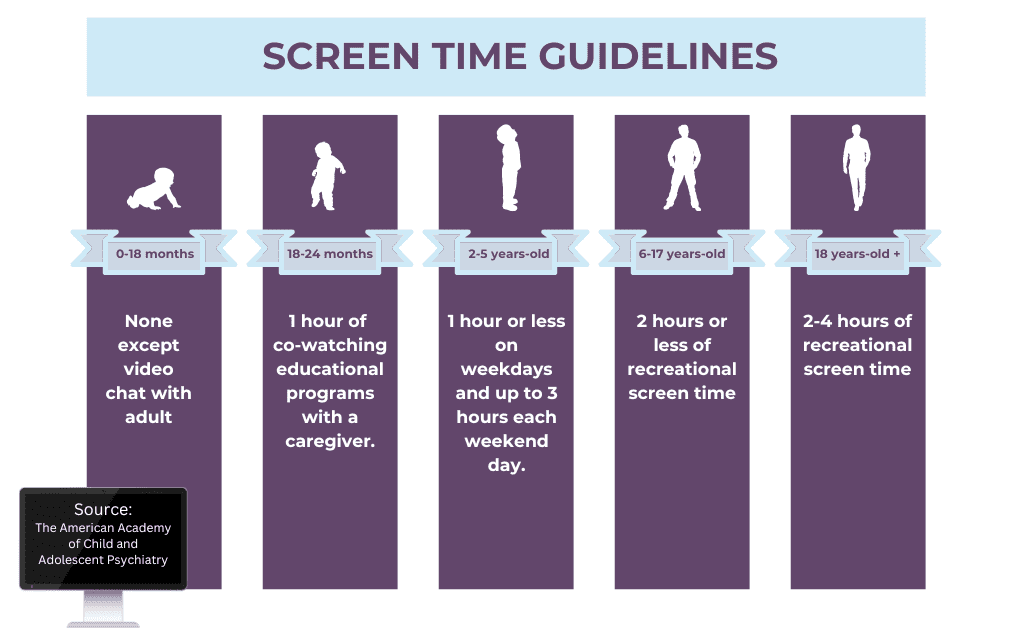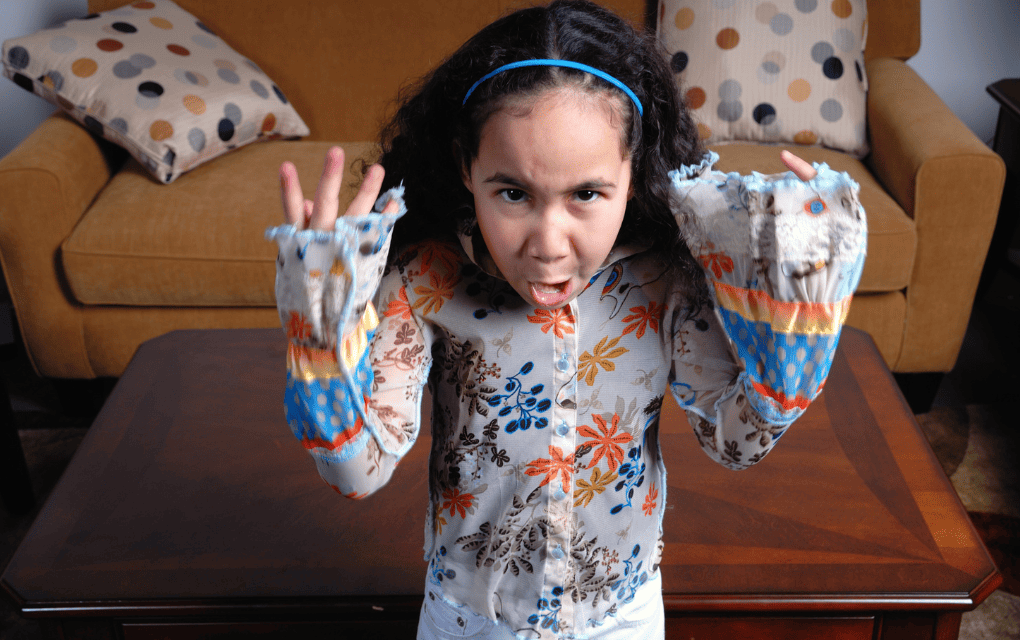The Impact of Screen Time and Screen Addiction in Children: Tips for Parents to Promote Healthy Habits
“Screen addiction” is a disturbing trend that has grown because technology is everywhere. This behavior problem has the potential to take over our lives and hurt both adults and children. Screens give off a dopamine rush, which makes using them feel good, but this can quickly lead to a dangerous level of dependence on digital devices that is hard to break.
What is considered a screen?
A screen is a phone, tablet, video game, computer, and TV.
What are screen time guidelines for children?
The American Academy of Child and Adolescent Psychiatry suggests the following guidelines for screen time:
- 0-18 months: None except video chatting with an adult
- 18–24 months: No more than 1 hour of co-watching educational programs with a caregiver.
- 2–5 years old: 1 hour or less on weekdays and up to 3 hours each weekend day.
- 6-17 years old: 2 hours or less of recreational screen time
- 18 years old and +: 2-4 hours of recreational screen time

What does the research say about screen use and children?
Multiple studies show how dangerous this dependency can be and the negative consequences it has in all aspects of life. Because kids spend so much time in front of screens these days, they face serious risks, including poor sleep, mental health issues, and impaired cognitive function.
The study, which was released in January in the journal JAMA Pediatrics, found that babies who watched an average of two hours of screen usage per day later fared worse on executive functions at age 9.
Executive function and self-regulation are the mental processes that help us plan, focus and pay attention, remember instructions, manage time, organize information, and do many things at once.
In short, more time spent in front of a screen when children are younger is linked to cognitive problems that are important for long-term health, school performance, and career success.
Why is a child’s screen time so addicting?
Dopamine is a neurotransmitter in the brain that is very important for happiness, motivation, and reward-motivated behavior. When we eat our favorite food, finish a job, or get a social media notification that makes our brains release dopamine, we get a rush of pleasure and reward. We call this a dopamine rush.
This makes us want to do the same thing again to get the same feeling. People can act like they are hooked to screens because they want to feel good when they use them, and screens keep releasing dopamine. This is especially true for social media and video games.
This addiction can make you spend too much time in front of a computer, which is bad for your physical and mental health, causes sleep problems, and affects your ability to get things done.
Are children really spending that much time on screens?
According to a study conducted by Common Sense Media, a non-profit organization that studies the effects of media and technology on children, kids spend most of their time online using social media, playing video games, and watching YouTube videos.
The study surveyed over 1,600 children between the ages of 8 and 18 in the United States and found that they spent an average of 6 hours and 40 minutes per day consuming media. Of that time, social media use accounted for 32% of their total media use, followed by video games at 14% and watching videos at 27%.
The study also found that the use of mobile devices has significantly increased, with 95% of teens and 65% of tweens (ages 8-12) now owning a smartphone. These results show how important it is to keep an eye on how much time kids spend in front of screens and to encourage a balanced and healthy media diet. (Common Sense Media, 2019)
Are video games really a concern for screen addiction?
Screen addiction is a serious concern, especially among kids who spend too much time in front of screens. One of the main culprits of this addiction is the playing of video games. The excessive use of video games leads to compulsive behavior, which is commonly referred to as internet gaming disorder or video game addiction. This disorder is categorized by the World Health Organization (WHO) as a behavioral addiction, as it shares many similarities with substance addiction.
Children who are addicted to video games show signs of screen dependency disorder, which impacts their physical and mental health. A child who is addicted to playing video games may display signs such as:
- irritability
- sleep problems
- poor academic performance
- a lack of interest in other activities
- aggressive behavior
- headaches
- eye strain
- back pain
- weight gain
Internet gaming disorder has an impact on the child’s social and emotional development, which can lead to behavior issues in school.
Students who are addicted to video games struggle with:
- maintaining focus
- respecting teachers and rules
- disruptive behavior in the classroom

Could the amount of screen time and behavioral disruption in schools be related?
A report from the National Center for Education Statistics says that the COVID-19 pandemic has hurt the social, emotional, and behavioral development of public school children in a big way.
87 percent of public schools said that the pandemic had hurt the social and emotional development of their children, and 84 percent said that it had hurt their behavioral development. Things tied to the pandemic have led to more disruptions in the classroom, disrespect for teachers, and rules against students using electronic devices.
Also, public schools said they needed more help for the mental health of students and/or staff, training on how to help students’ social and emotional growth, more staff, and training on how to run a classroom. (Source: National Center for Education Statistics)
Screen addiction is becoming more and more of a problem for our kids, and the effects can be devastating.
What can parents and educators do to limit screen time and promote healthy behaviors?
- Set ground rules early and be consistent with the set limits.
- Encouraging children to engage in other activities, such as sports or arts and crafts, can help to distract them from the pull of screens.
- Family life and family activities should revolve around more than screens.
- Designating media-free times and media-free locations, like banning screens during mealtimes or in the bedroom, can help reduce screen time and promote healthy habits.
- Discuss and educate children often about how screen time affects their mental health and brain development.
- Choosing high-quality programming can ensure that the time spent in front of screens is educational and beneficial for the child’s growth.
- Parents and educators should also model good screen habits by limiting their own screen time and engaging in other activities.

Can parental controls help screen time?
Parental controls are an important tool for parents to use in order to limit the amount of time their children spend on screens, as well as what types of content they can access.
These controls can be set up on devices such as smartphones, tablets, and computers. Parents can also restrict the amount of time spent playing video games or browsing social media sites.
Parents can make sure that their kids’ screen time is safe and appropriate for their age by setting rules and limits.
In conclusion, screen addiction is a growing problem in both adults and children, and it’s essential to take steps to manage screen time and promote healthy behaviors. Parents and teachers can help kids stop being addicted to screens and grow up in a healthy way by setting limits on how much time they can spend in front of them, making tech-free zones, and talking to kids about how screens affect their mental health.







